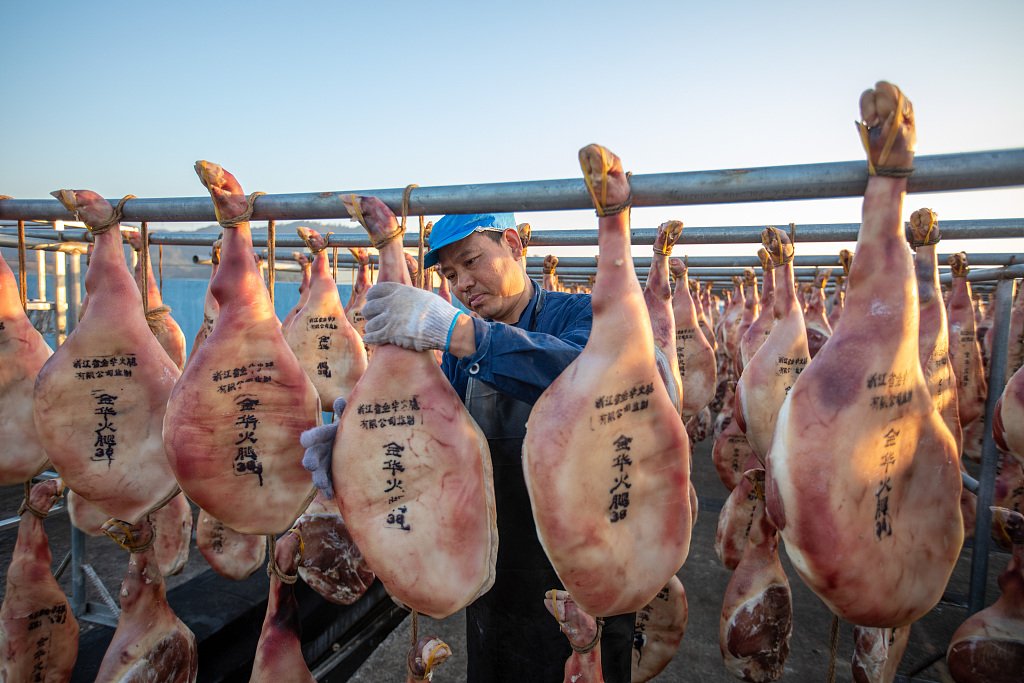Jinhua ham, a culinary treasure from the city of Jinhua in east China’s Zhejiang Province, stands as a testament to the region’s rich gastronomic history and expertise. With a legacy spanning more than a thousand years, this dry-cured ham is celebrated for its distinctive umami flavor and meticulous preparation process, distinguishing it from the more common fresh hams found in many parts of the world.
The production of Jinhua ham involves a carefully honed process that transforms ordinary pork into a gourmet delicacy. It starts with selecting high-quality pig thighs, which are then marinated in salt for over 35 days. This salting stage is crucial, as it not only preserves the meat but also begins to develop its unique flavor profile.
After the salting process, the ham undergoes a thorough washing to remove excess salt, a step that requires precision to ensure the right balance of flavors. Following this, the hams are hung to dry for several days in a controlled environment. This drying phase is where the magic happens – the ham slowly loses moisture, concentrating its flavors and developing a firm texture.
The aging process of Jinhua ham is an art in itself. The duration of aging can vary, with some hams maturing for several months or even years. This extended aging allows the ham to develop a deeper, more complex flavor profile, making it a highly sought-after ingredient in gourmet cuisine. The final product is a harmony of salty and savory tastes, with a rich, aromatic quality that is both subtle and profound.
Renowned for its intense umami flavor, Jinhua ham is more than just a food item; it’s a cultural icon, representing the culinary heritage of Zhejiang Province. Its production is a time-honored tradition, passed down through generations of artisans who have perfected the craft of curing and aging meat.
In the culinary world, Jinhua ham commands respect and admiration. A single piece can sell for around $80 USD, a price that reflects its quality, the skill involved in its production, and the time it takes to age. It is a luxury item, often used in small quantities to enhance the flavor of various dishes, including soups, stews, and rice dishes.
The story of Jinhua ham is one of patience, skill, and tradition. It epitomizes the art of food preservation and the importance of culinary heritage. As a symbol of Zhejiang’s rich gastronomic culture, Jinhua ham continues to delight the palates of food connoisseurs around the world, offering a taste of China’s ancient culinary wisdom.
READ MORE:
